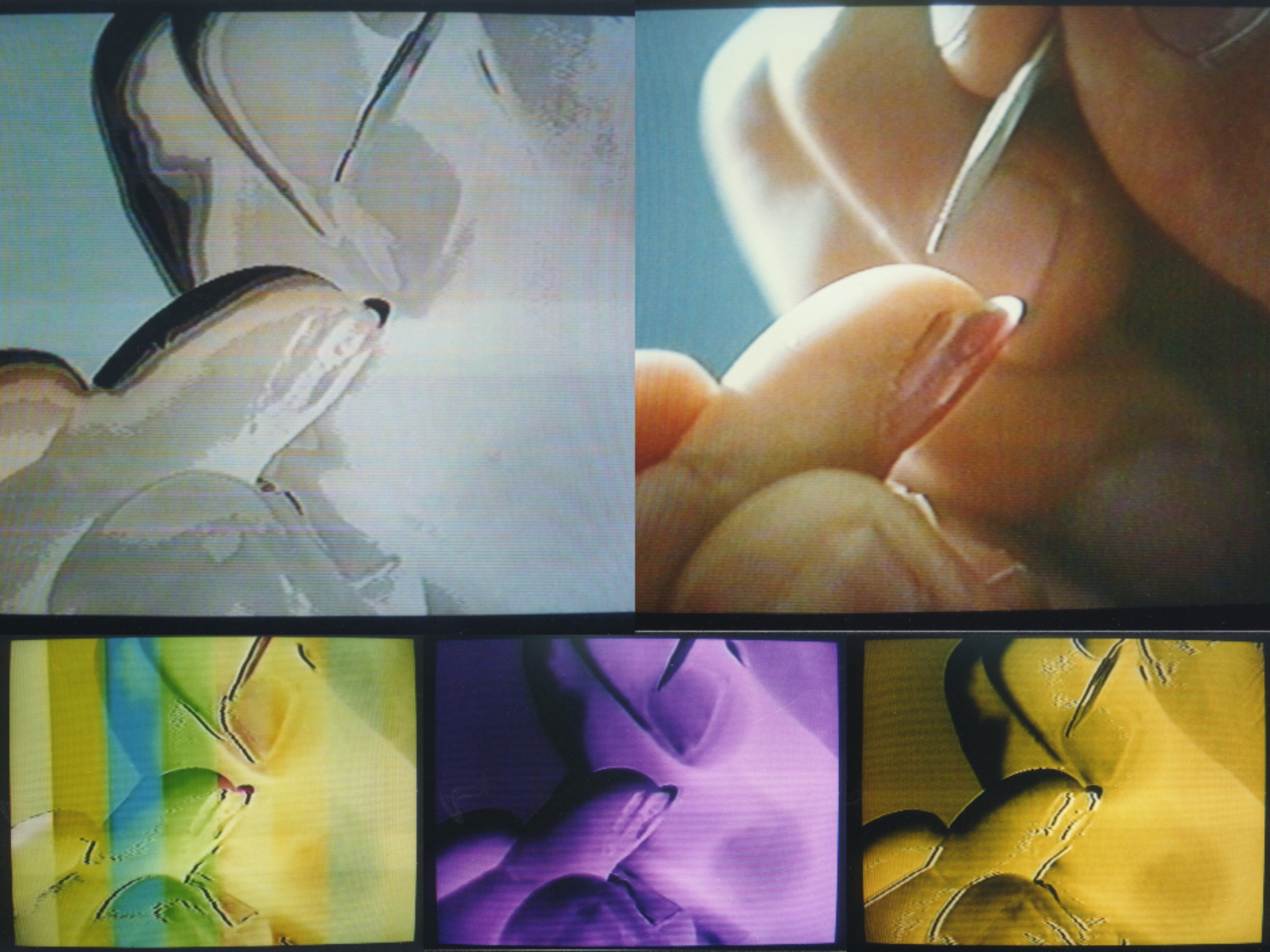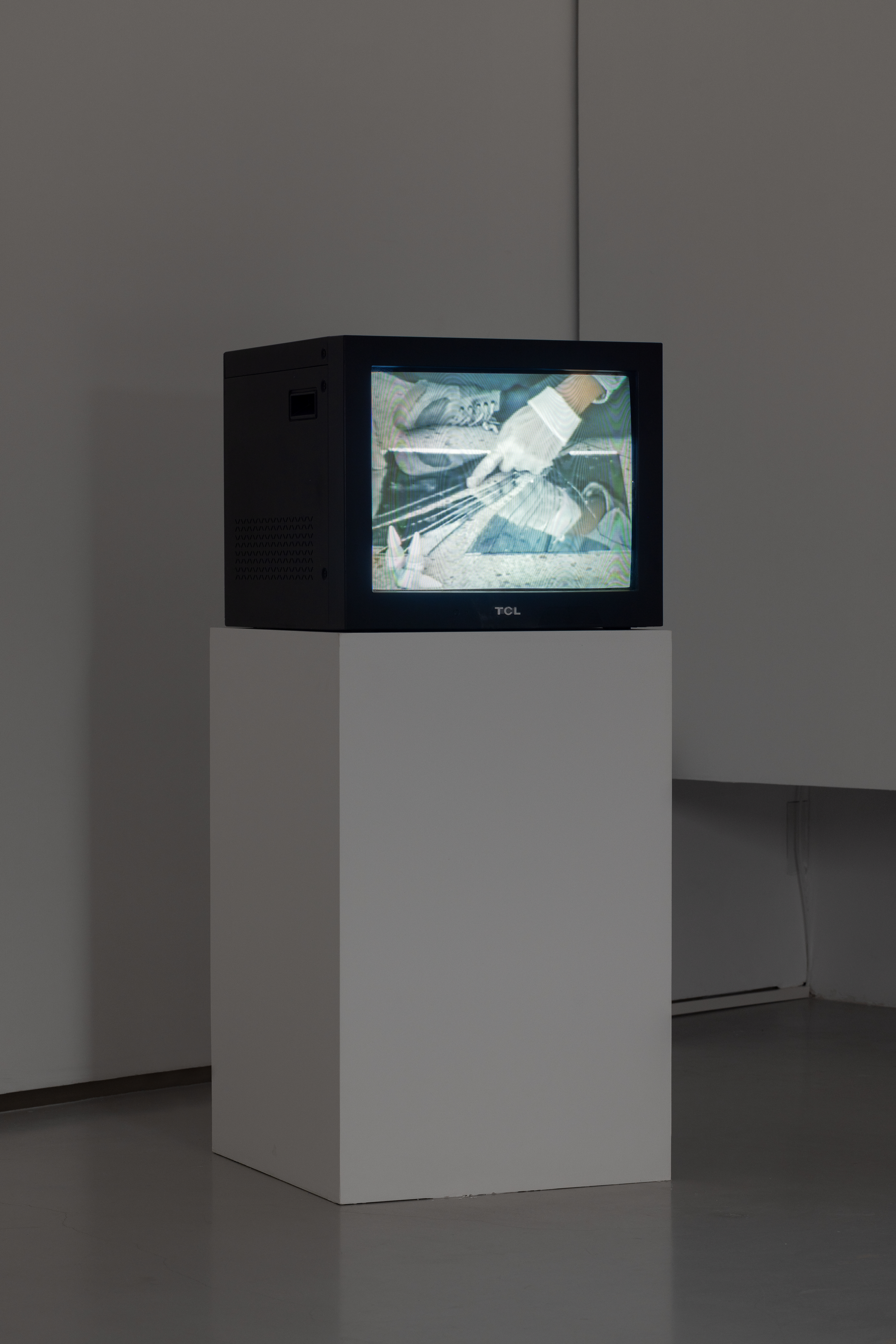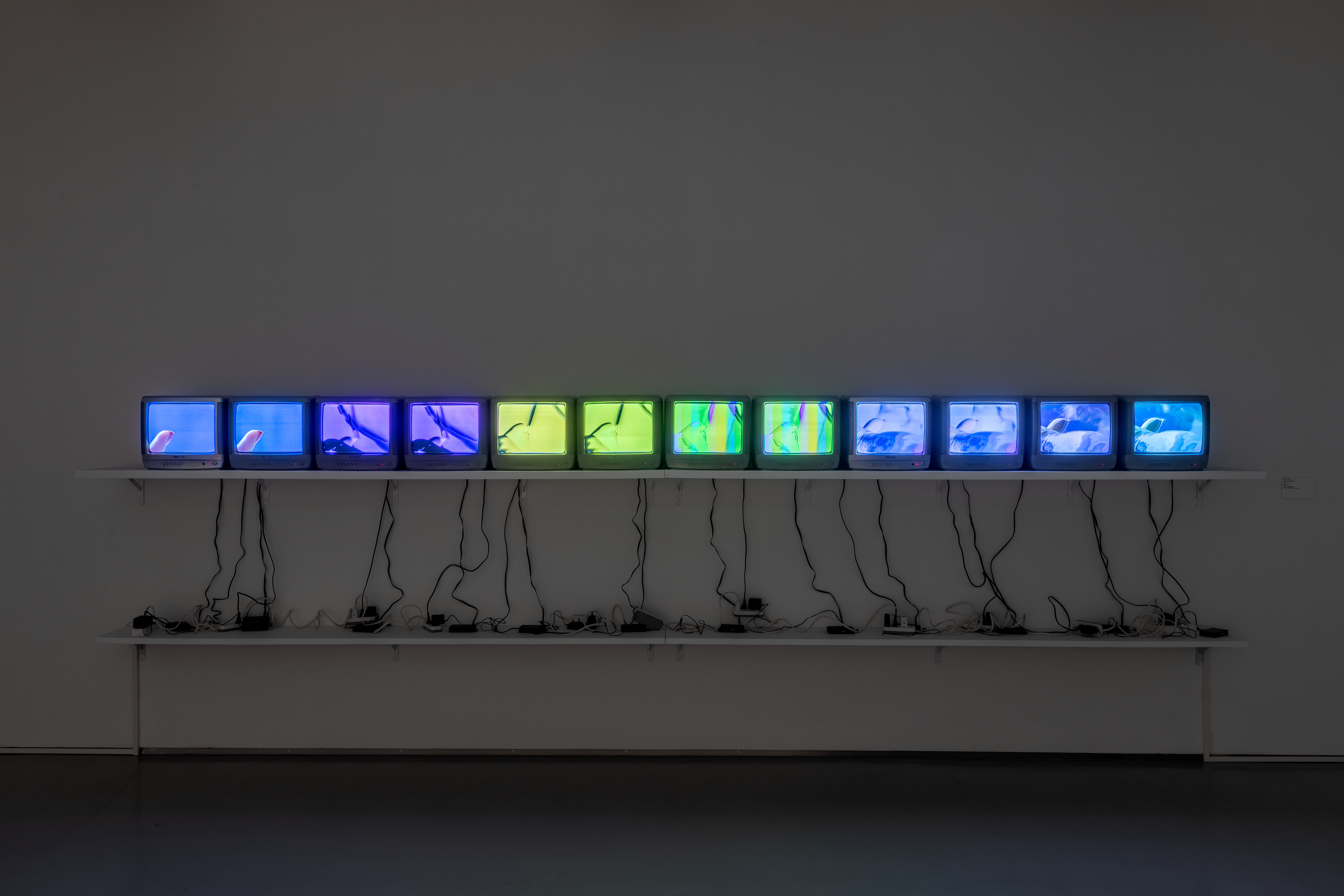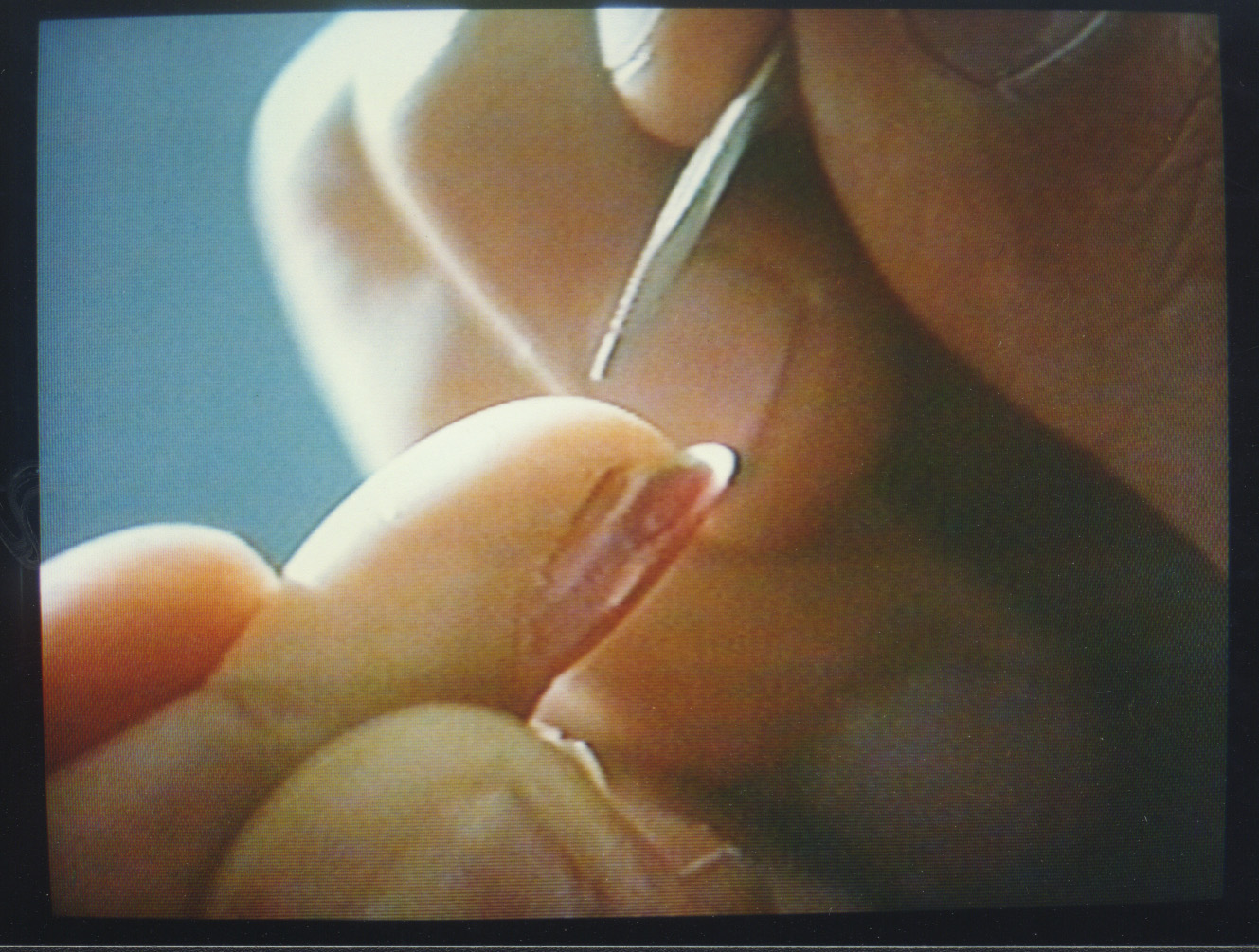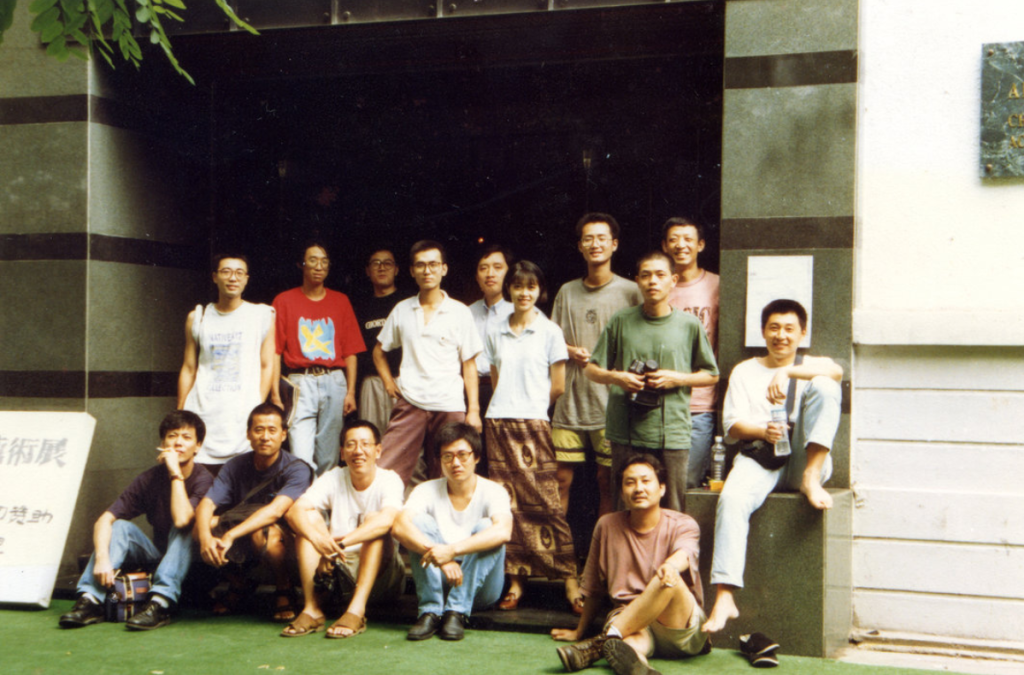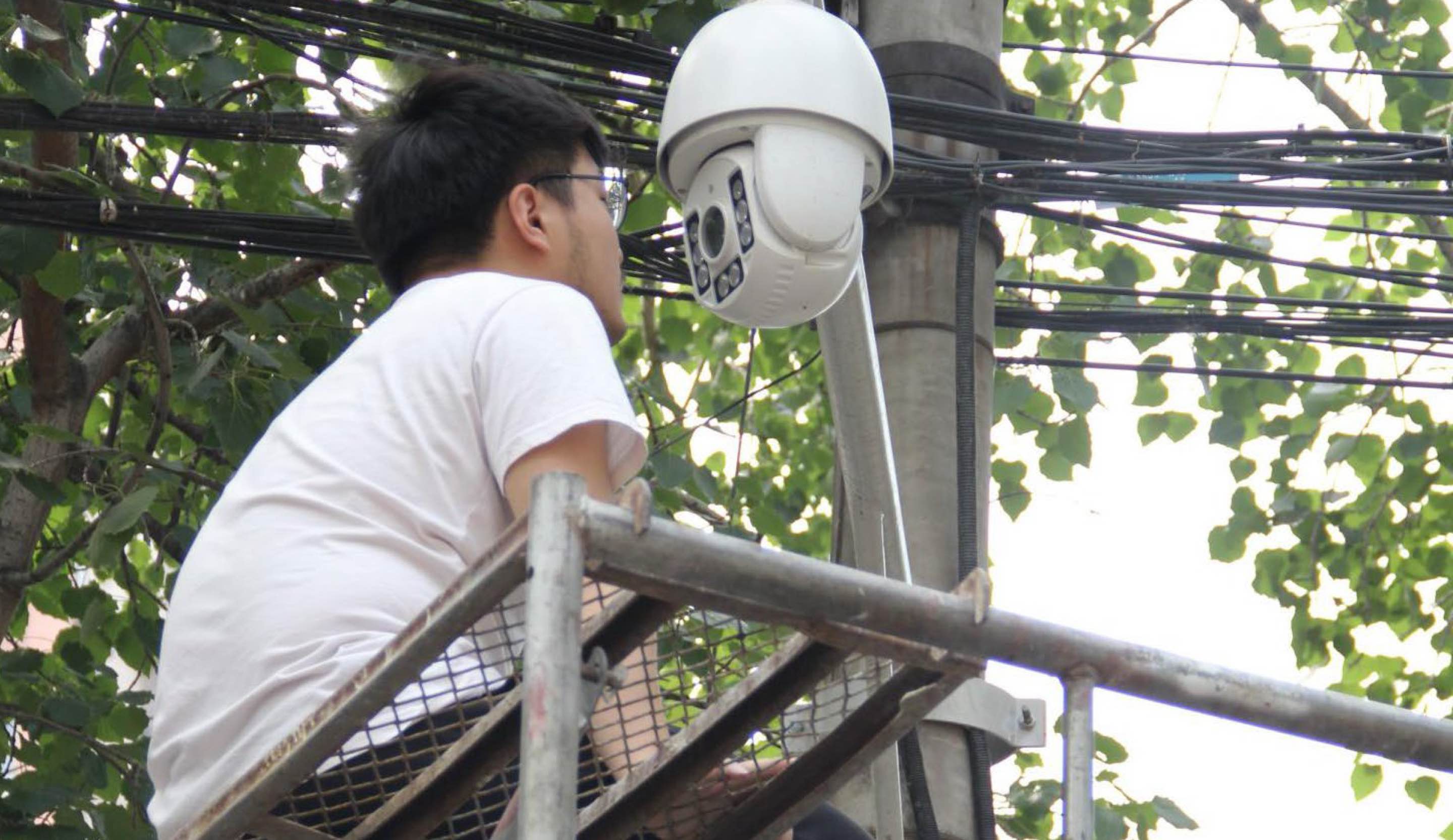2024.08.24 - 2024.10.31
2011.4.27-Permanent
- DurationAugust 24 - October 31,2024
- Opening hourTuesday - Sunday 10:00-17:30
- AddressTaikang Art Museum, 1-2F Taikang Art Museum, Building 1, Yard 16, Jinghui Street,Beijing Taikang Group Building
- CuratorsTang Xin, Hu Hao
- OrganizerTaikang Art Museum
- Exhibition SupportMr. Guan Yi, Ms. Yang Wenjun, Ms. Michelle, SPURS Gallery, Taikang Insurance Group
- Cooperative InstitutionCentre For Experimental Film
- Special AcknowledgmentOPPLE
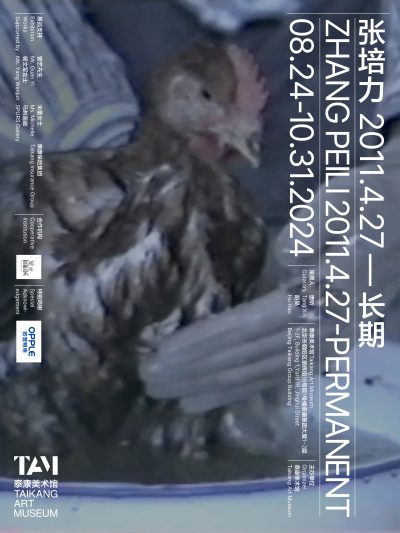
The Taikang Art Museum will be hosting the solo exhibition “2011.4.27 – Permanent” by Zhang Peili, renowned as the “father of Chinese video art” and an influential new media artist, from August 23 to October 31, 2024. This exhibit will focus on body, identity, and personal experience for the first time. It will feature over 30 pieces/sets of works across various media such as paintings, videos, performances, installations, sculptures, and composite materials, supplemented by manuscripts and video archives. The exhibition aims to systematically explore and showcase the artist’s remarkable career from 1984. “2011.4.27 – Permanent” is curated by Tang Xin, the artistic director of Taikang Art Museum, and Hu Hao, a curator at Taikang Art Museum.
Zhang Peili is a prominent figure of the ’85 New Wave movement. He is a core member of the ’85 New Space and Pond Society and one of the most internationally influential contemporary Chinese artists. Born in Hangzhou in 1957, he graduated from the Oil Painting Department of the Zhejiang Academy of Fine Arts (now the China Academy of Art) in 1984. Over the past four decades, he has been active in contemporary art scenes in China and worldwide. Based in the New Media Art Department of China Academy of Art, Zhang has worked alongside his peers to blaze a trail in art education, nurturing a generation of young artists who have gained domestic and international recognition and cultural and artistic professionals in a broader sense. Zhang’s works often captivate audiences with their connection to the essence of life while subtly embedding thought-provoking ideas within.
The exhibition title “2011.4.27 – Permanent” is taken from the validity period of the artist’s ID card, indicating that the exhibition content relates to the various imprints left between the individual and societal systems, as well as the deep reflections these encounters provoke. The exhibits include multiple pieces from the X? series (1986-1987), masterpieces such as 30 × 30 (1988), (Wei) No. 3 (1991), and Personal Hygiene (1998), which have occupied a place in world contemporary art history and important exhibitions, video installations such as Related Beats (1996), which are rarely displayed and invite audience interaction, as well as recent works that, while starting from individual perspectives, directly address contemporary issues, such as Passport and Endorsement (2014), and Organs and Bones (2019).
Unlike Zhang’s previous exhibitions, “2011.4.27 – Permanent” is not arranged chronologically. Instead, it stimulates new experiences for the audience through the parallel display of new and old works. At the exhibition’s entrance, the curtain installation Data on Lungs, Gallbladder, Common Bile Duct, Arteries, Pulmonary Arteries, and Pulmonary Nodules (2019), printed with the artist’s body data code, will appear and disappear under changing lights. This piece forms a central “trinity” axis with The Code (2019), which displays the artist’s ID number on fluorescent paper, and 30 × 30 (1988), considered China’s first video artwork. Complementing this arrangement are the oil painting of X? (1986, oil on canvas) and the Agate Head from the “Viscera” series (2019), symbolizing the consistent “body” theme running through Zhang’s career. In his view, an individual’s body and the experiences attached to it are the wellspring of artistic creation.
To provide a better understanding of Zhang’s early “road map”, Taikang Art Museum has collaborated with the Center for Experimental Film(CEF) to present the second session of “CEF: Historical Segmentation” titled “From Conceptual Painting to Conceptual Video: The First Work with Motion Video as Medium and Zhang Peili’s Earlier Works.” The “segmentation” will be displayed at the exhibition hall entrance, alongside Zhang’s text works The Art Project No. 2. These will be accompanied by the original publications by Zhang in his youth and selected original publications in which the manuscript was published, such as Creating Meaning, Thoughts on a News, and Fighting against the West? On the one hand, these “materials” constitute the concept of a “file room,” emphasizing their documentary nature. On the other hand, the inherent artistic quality and strong sense of incompleteness of The Art Project No. 2 challenge the precise documentary meaning. This tension echoes the vigilance in the X? series against the solidification and decline of meaning in art, revealing the artist’s consistent critical consciousness.
The keyword “hygiene” connects X? (1987), 30 × 30 (1988), Brown Book No. 1 (1988), Personal Hygiene, and (Wei) No. 3. Starting with the X? series, Zhang Peili frequently employed glove imagery for an extended period: the oil painting X? series, Brown Book No. 1 are directly related to gloves; 30 × 30 and (Wei) No. 3 are videos of the artist wearing rubber gloves; Personal Hygiene can be regarded as an extension of gloves and “hygiene.” These works can be traced back to the influence of his parents’ medical professions and his frequent childhood illnesses, but they also reflect his direct perception and keen observation of China’s social and cultural environment from the late 1980s to the early 1990s. By the late 1980s, the significance of “gloves” in Zhang’s works had evolved beyond simple background knowledge, moving towards a synthesis of meaning and perception in serialized works. For example, the Report on Hepatitis A in 1988 originated from his experience of being hospitalized for 40 days due to hepatitis A, during which seriously ill patients even died in the ward hallways. The laminated glass and the processed rubber gloves resemble specimens carrying pathogenic bacteria, becoming evidence of disease and death. In 1988, hepatitis A was prevalent throughout Eastern China, with over 300,000 people infected in Shanghai alone. This public health emergency reminded Shanghai and surrounding provinces and cities of the necessity of reforming the public health system. Indeed, the hepatitis A outbreak led to improvements in Shanghai’s and even the entire country’s ability to respond to public health emergencies, warn of epidemics, and construct public health security systems. From the X? series to (Wei) No. 3, then to Personal Hygiene, it is no coincidence that the “hygiene” thread in Zhang’s works spans the transition period of China’s public health system. The “Patriotic Health Movement,” once closely linked to grassroots mobilization, gradually transformed into a more scientific modern public health system with self-evident sociological and historical implications. For scholars, this presents a valuable research topic requiring both knowledge and imagination, while Zhang, sensitive to the “body,” consistently approaches it more directly.
Related Beats stands out as a somewhat “off-topic” piece in this exhibition, positioned at the midpoint of the exhibition route. As a video device that includes a seesaw and dual-channel projection equipment for audience interaction, it highlights another keyword in Zhang’s artistic career: “media.” As curator Henriette Huldisch stated in the preface of the exhibition “Before Projection: Video Sculpture 1974-1995,” “The history of time-based art is also the history of technological development.” Time-based art refers to contemporary art that includes video, film, slides, audio, or computer technology as they unfold to the audience over time in terms of duration. Related Beats reveals that video/recorder, as a new medium, extends from human bodily perception and exposes the inherent properties of video media in the 1990s, including its materiality, technological limitation, and accompanying spiritual charm that is both real and illusory. The artist once mentioned in an interview that his works are all “rawish” rather than finished or polished. In many cases, we can interpret this “rawish” state as a dimension of self-reflection emanating from within the artwork itself.
The juxtaposition of works in this exhibition is not always guided by the stories behind them but rather by considering the immediate impressions visitors might have while standing in the exhibition hall. Assignment No. 1 (1992), Passport and Endorsement (2014), and The Bruised Arm (2019) are placed together because they collectively weave an intriguing space of meaning: Passport and Endorsement depicts the product of national and social governance, and the imprint that individuals will inevitably leave when taking actions, meticulous and unquestionable. These are juxtaposed with two other exhibits that evoke a sense of pain: Assignment No. 1, which involves collecting fingertip blood, and The Bruised Arm, a record of injury. Like a peaceful reminder, they describe the moments when individuals encounter the governance system – perhaps not causing huge waves, but at least leaving a feeling of being pricked or bumped, which is precisely the effect of modern governance on individuals. Zhang states: “The most important thing in a complete social system is to bring all people into the system and control them. Individual behavior can only operate within this system, and there is no way to survive without it.” The artist views the social governance system as an unavoidable Janus figure, and his frequent approach is to record and imagine, through artistic creation, how individuals might interact with it.
As an important anchor point in Zhang’s career and one of the widely acclaimed “Zero Degree Painting” series (paintings without meaning and narrative), five out of more than twenty works in the X? series are featured in this exhibition. However, they are intentionally placed in different exhibition halls. What needs to be emphasized are the hidden differences behind the repetitive themes of this series. For Zhang, the significance of “repeat” is beyond doubt. In 2017, it even became the title of an important solo exhibition of him in the United States. Yet, as mentioned earlier, Zhang’s works are always charged with tension; if something is constructed in a piece, there must be an opposing force trying to destroy it. Related to the X? series, The Procedure of “Report First, Act Later: – Regarding<X?> aims to disrupt the complete program. It, “in all apparent seriousness,” introduces how to repeat the X? series a hundred times, but it is a joke because the plan was never completed, or even seriously implemented from the start. In other words, it uses a procedural approach to oppose the program itself, conveying the ironic meaning through artistic concepts. Similarly, the image of X? (1986) with numbers on the canvas relates to the artist’s brief engagement with medical-related surveying and mapping work after graduating from high school. This may be the origin of his data-driven approach to recreating “organs and bones” many years later. As a result, it appears in the same space as Organs and Bones (2019), reflecting and “undermining” each other. Over a hundred components will be placed in the exhibition hall at random as if the artist is diluting the tension brought by X? in a less “serious” way. What is important is that it is the same (repeat), and there are differences (discrepancies) behind it.
The array of the “Viscera” series (2019), closely related to Organs and Bones, is placed at the end of the exhibition. Echoing The Code at the exhibition’s opening, the gradual change on the display platform and spotlights imbue the array with a ceremonial atmosphere and help the audience to re-examine their bodies. Eliminating boundaries has always been a creative principle upheld by Zhang, which will be fully developed in the last space. X? (1987), 30% Fatty Meat, 70% Lean Meat (1997), Total Blood Quantity (2019), and Total Fat Content (2019) offer a series of creations on the theme of body and flesh. While their content varies, they form a cohesive whole within the overall ambiance. The exhibition will conclude in a contemplative manner, like an end to the artist’s “permanent” career.


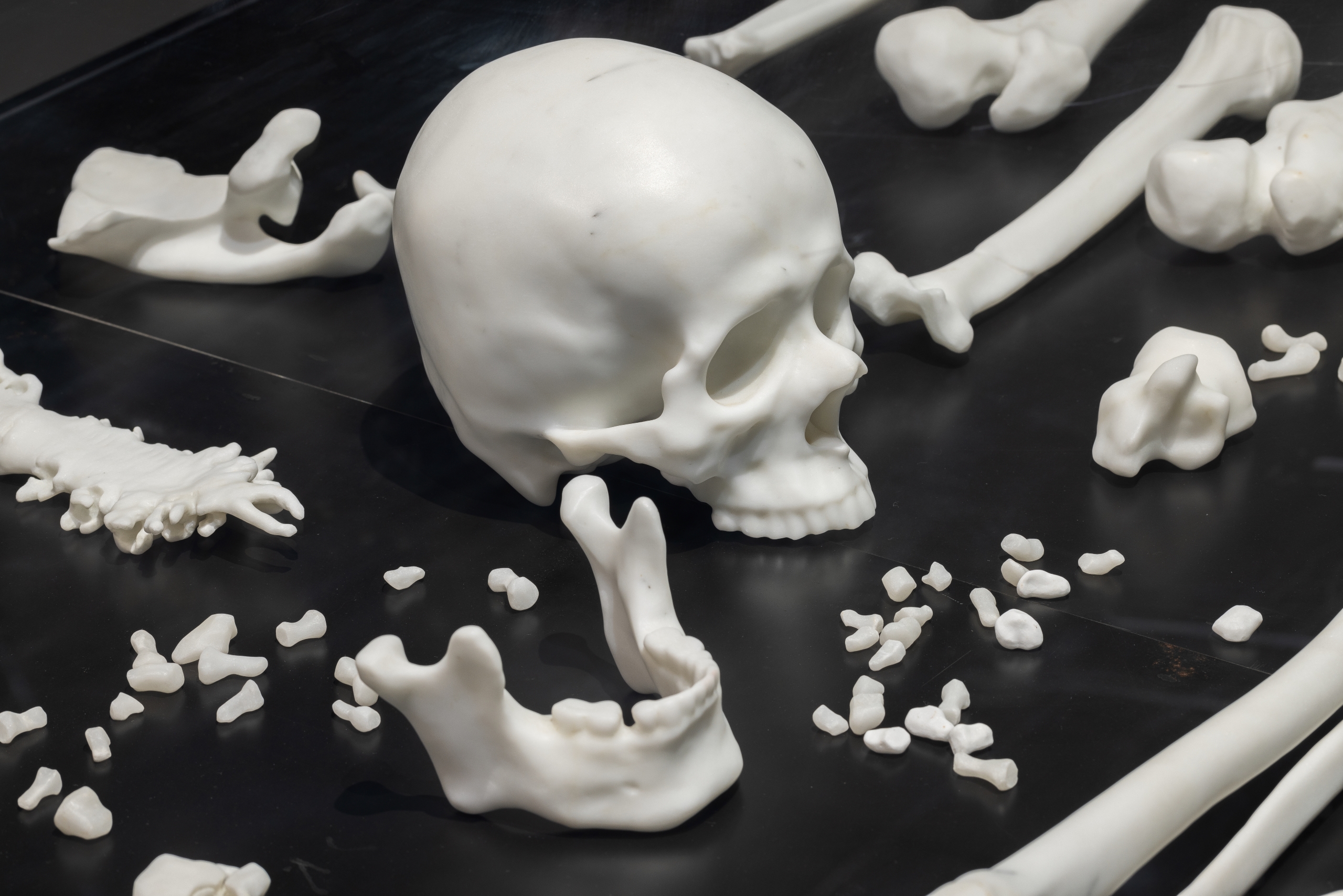
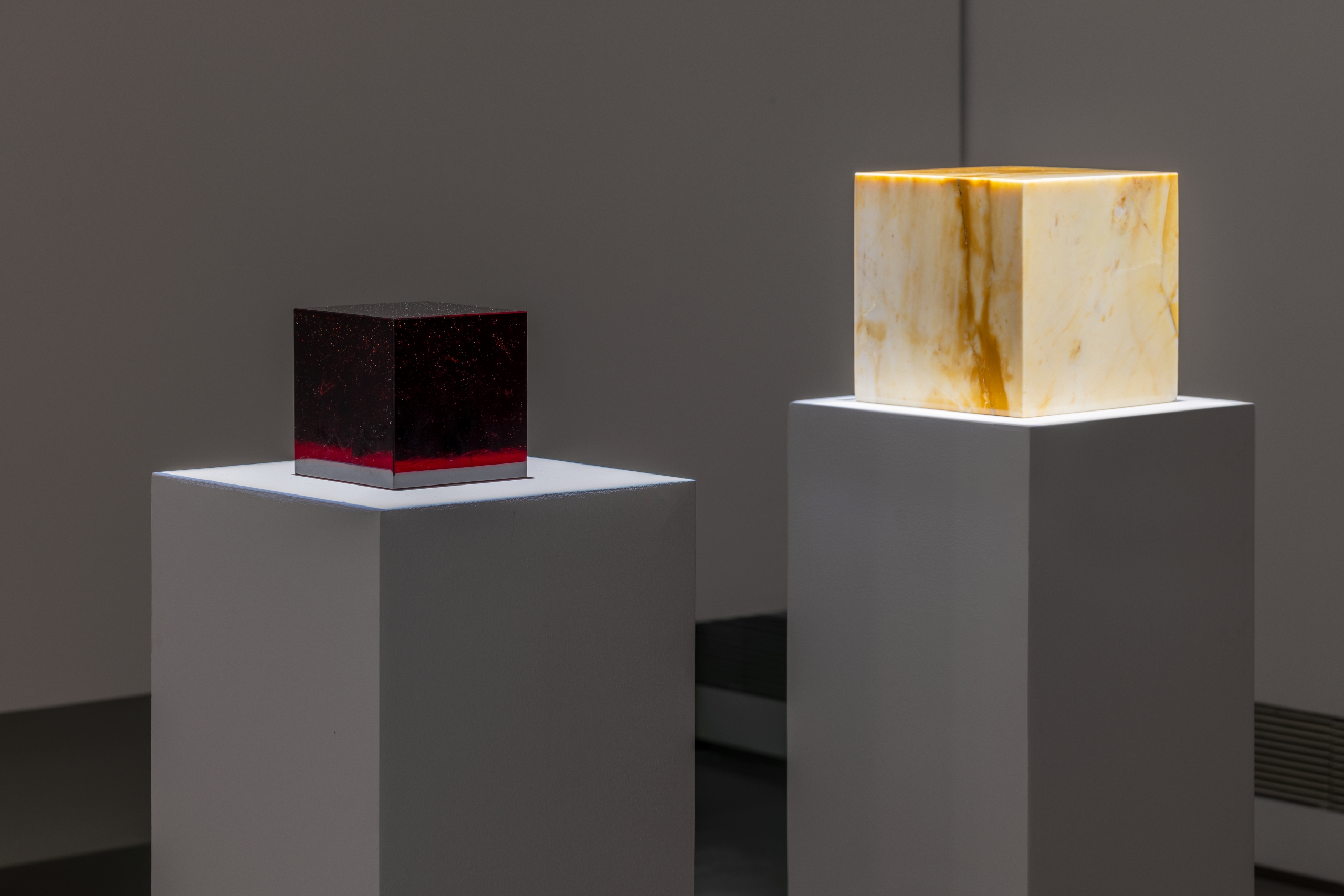
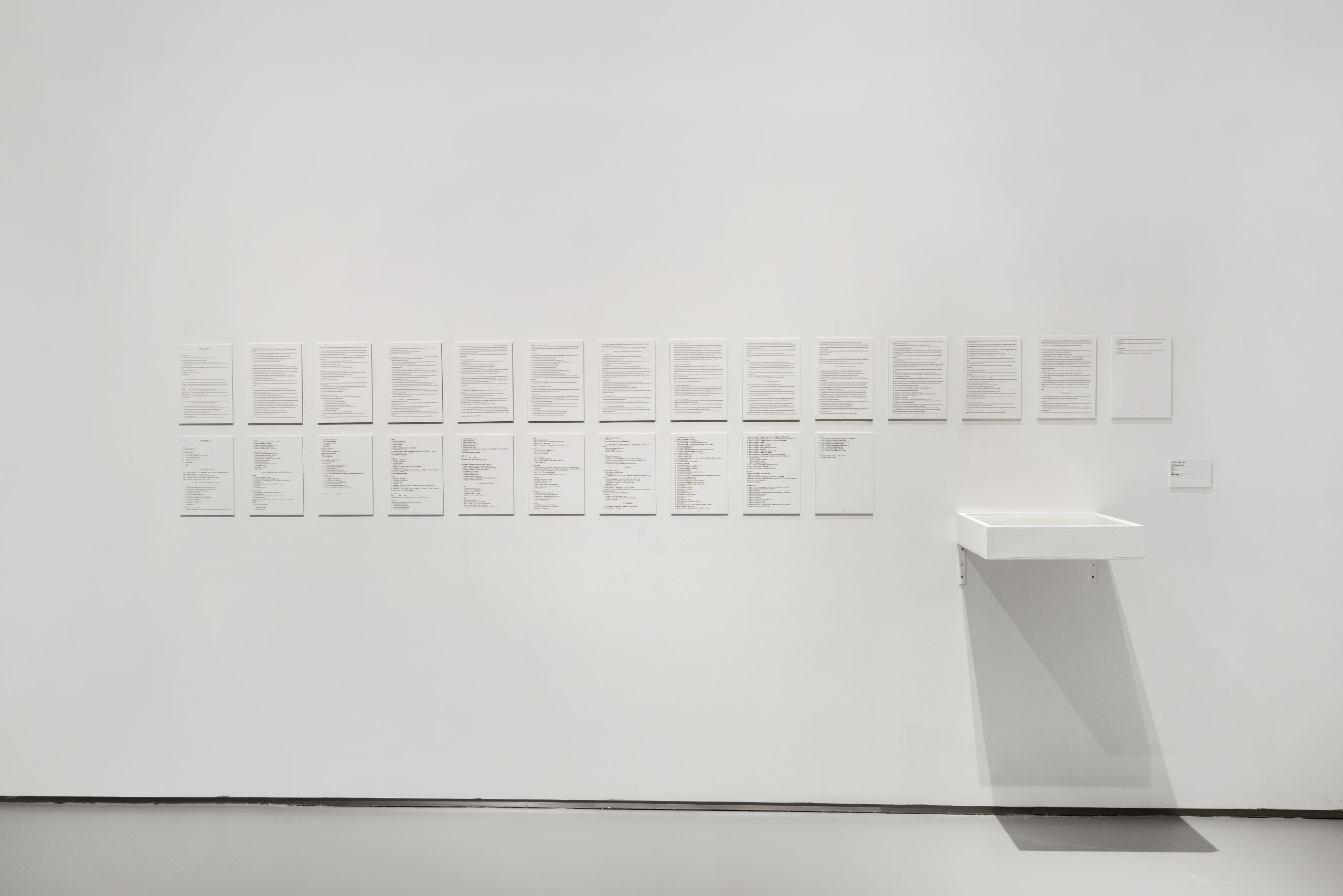

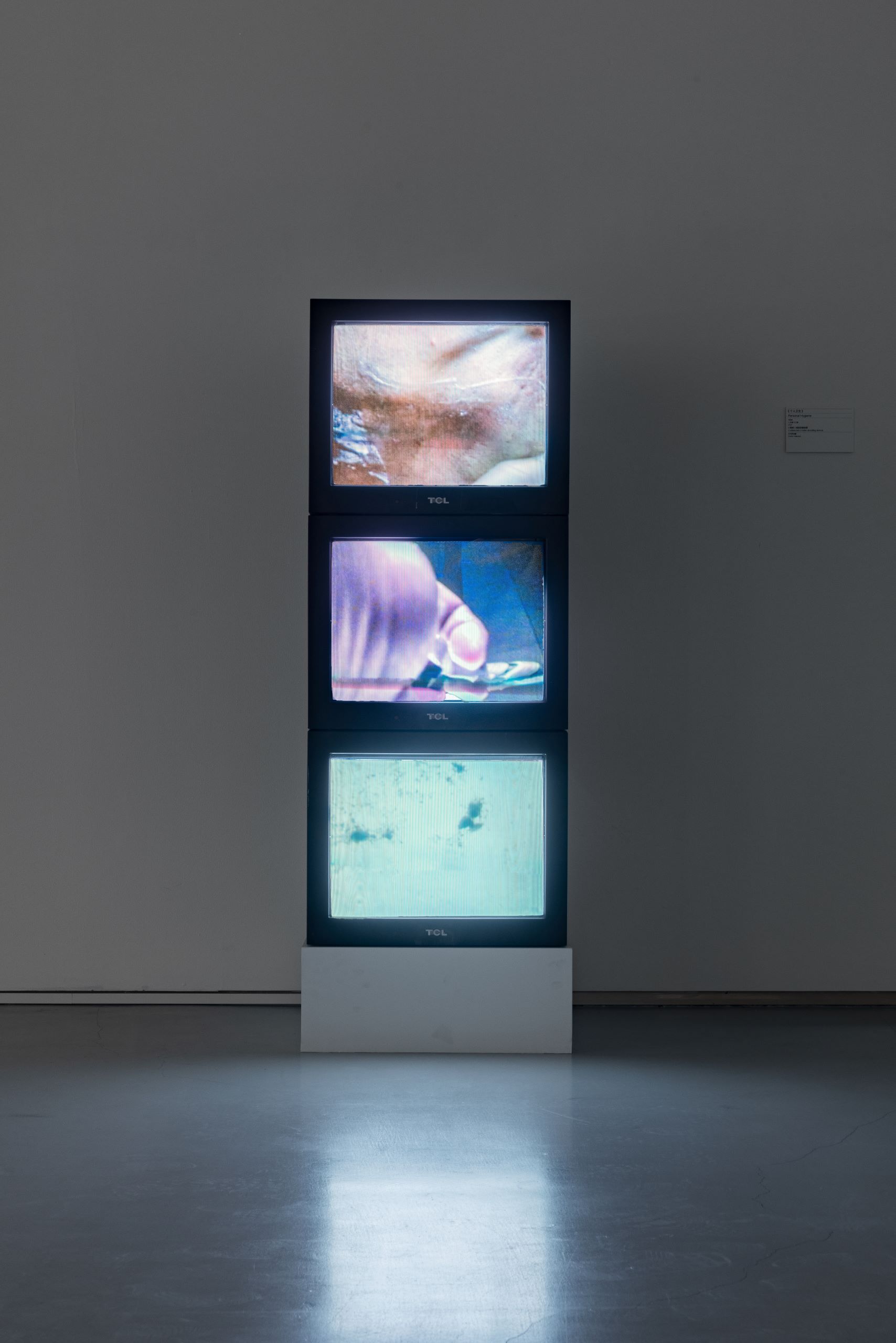
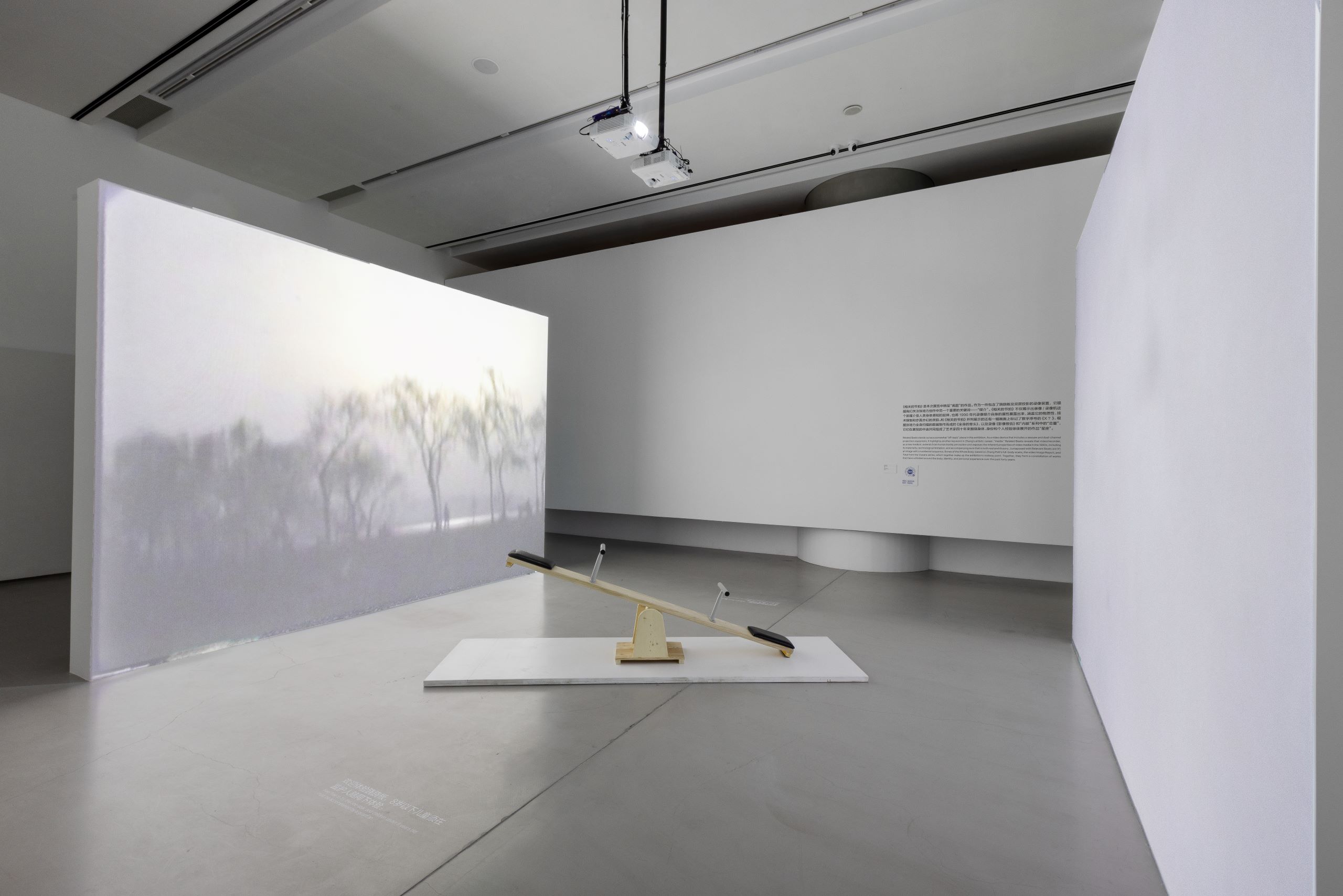
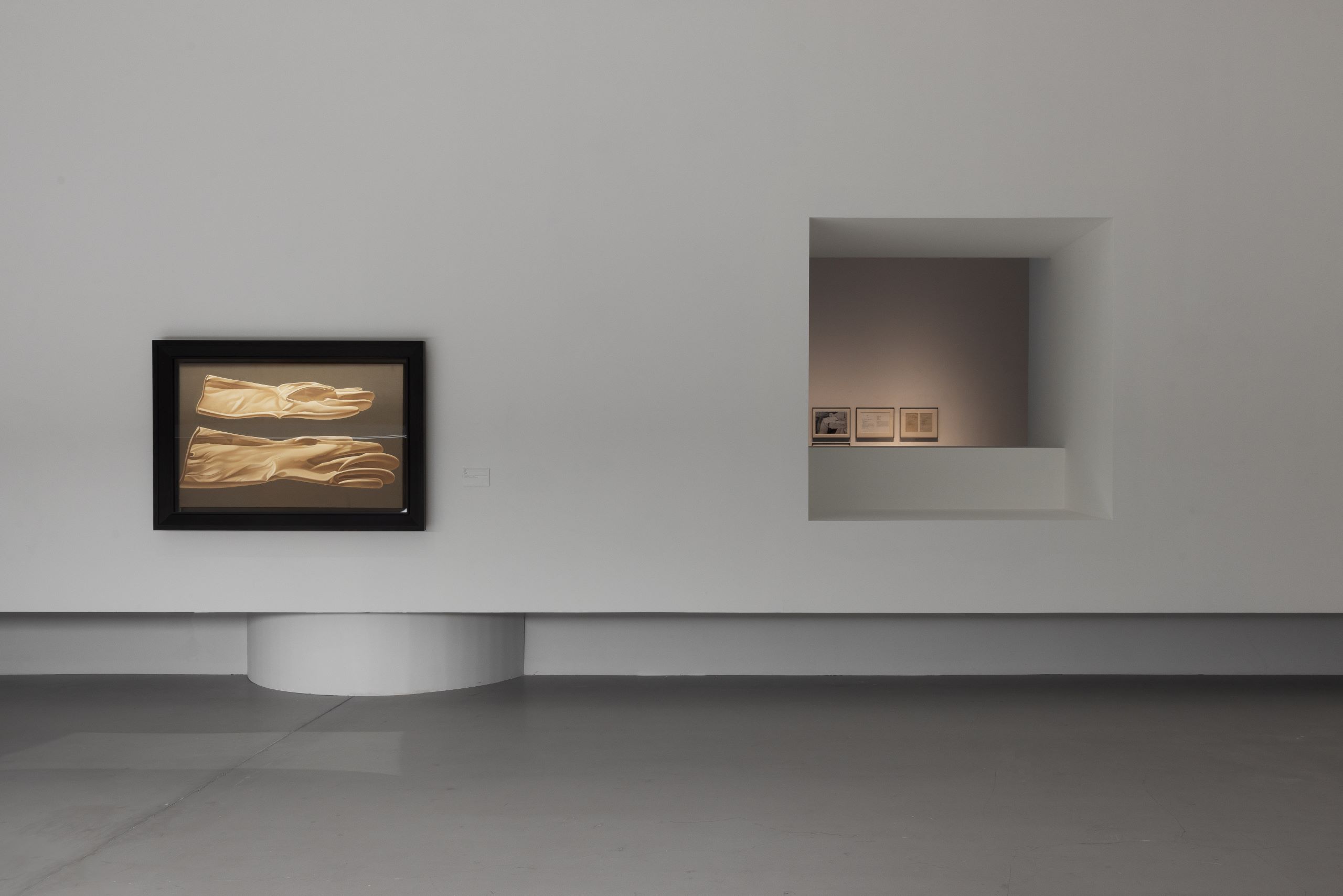
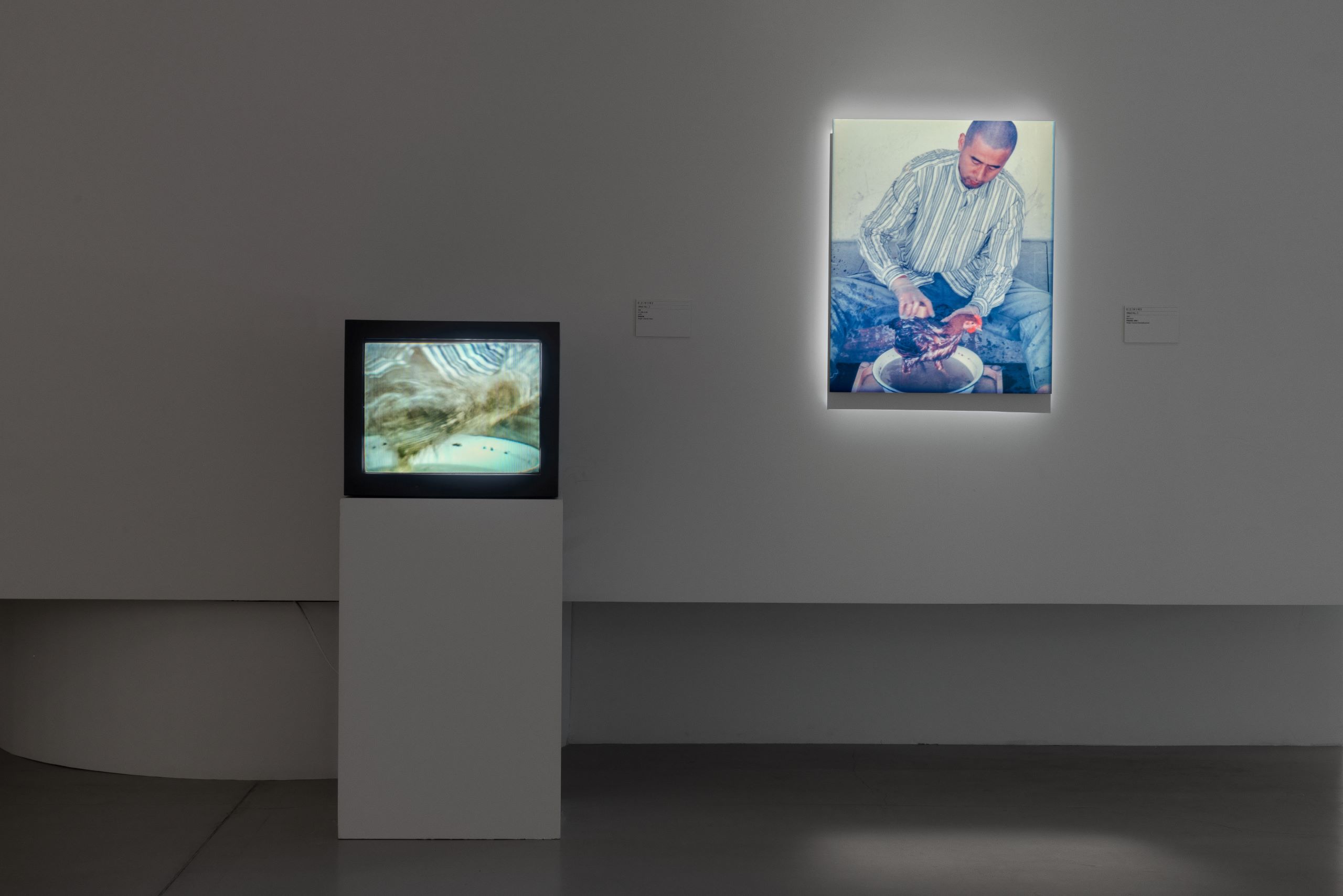
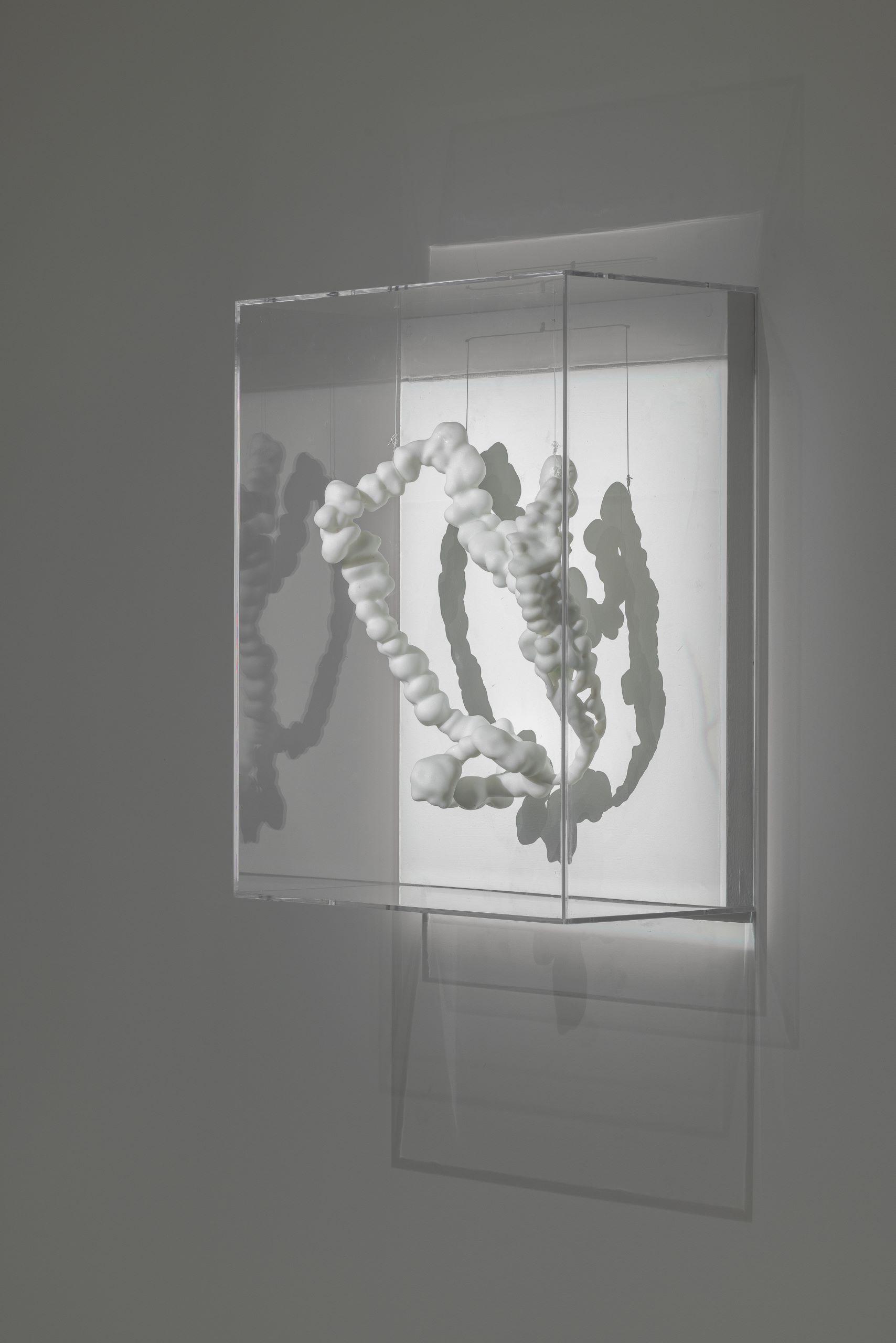
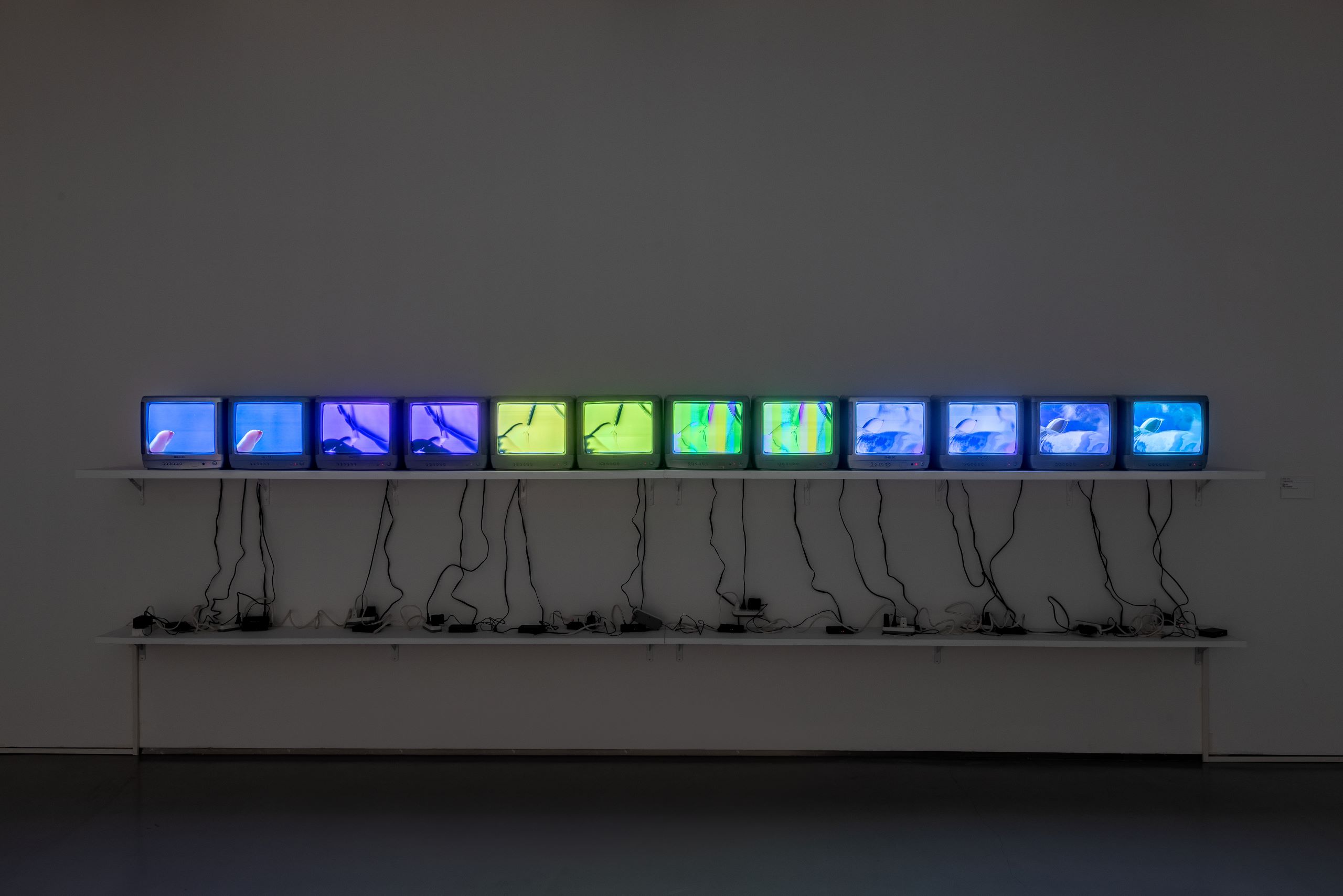
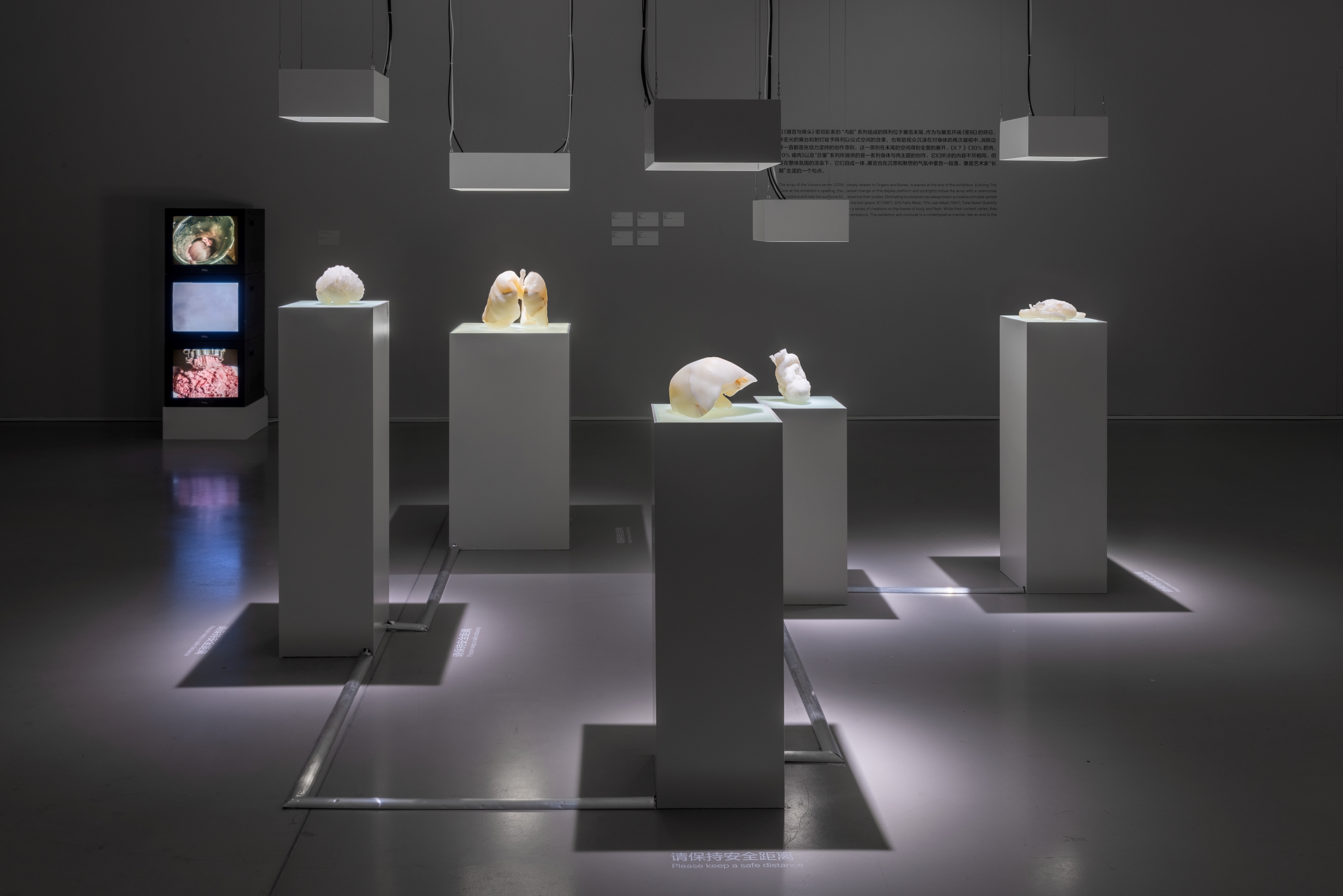
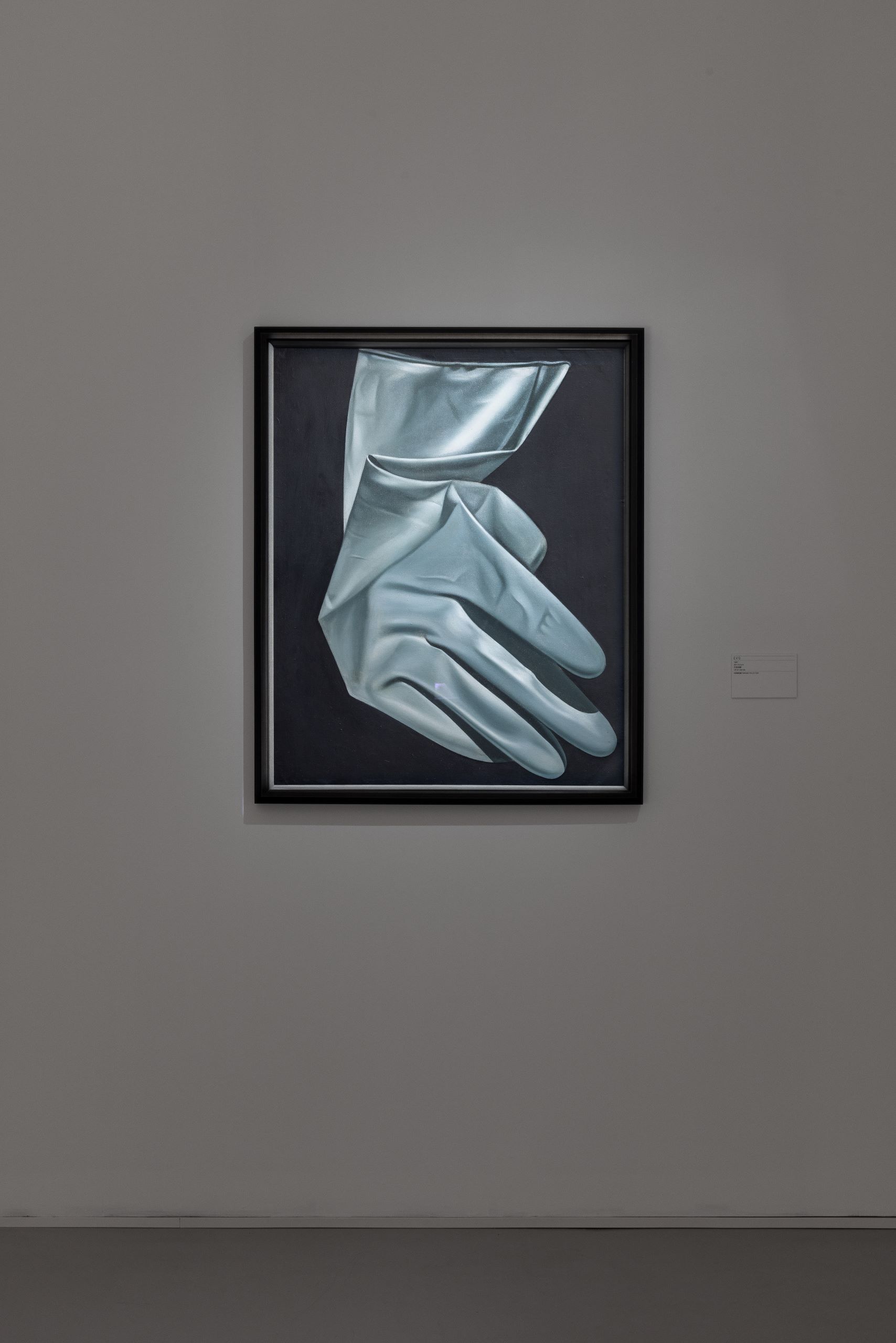
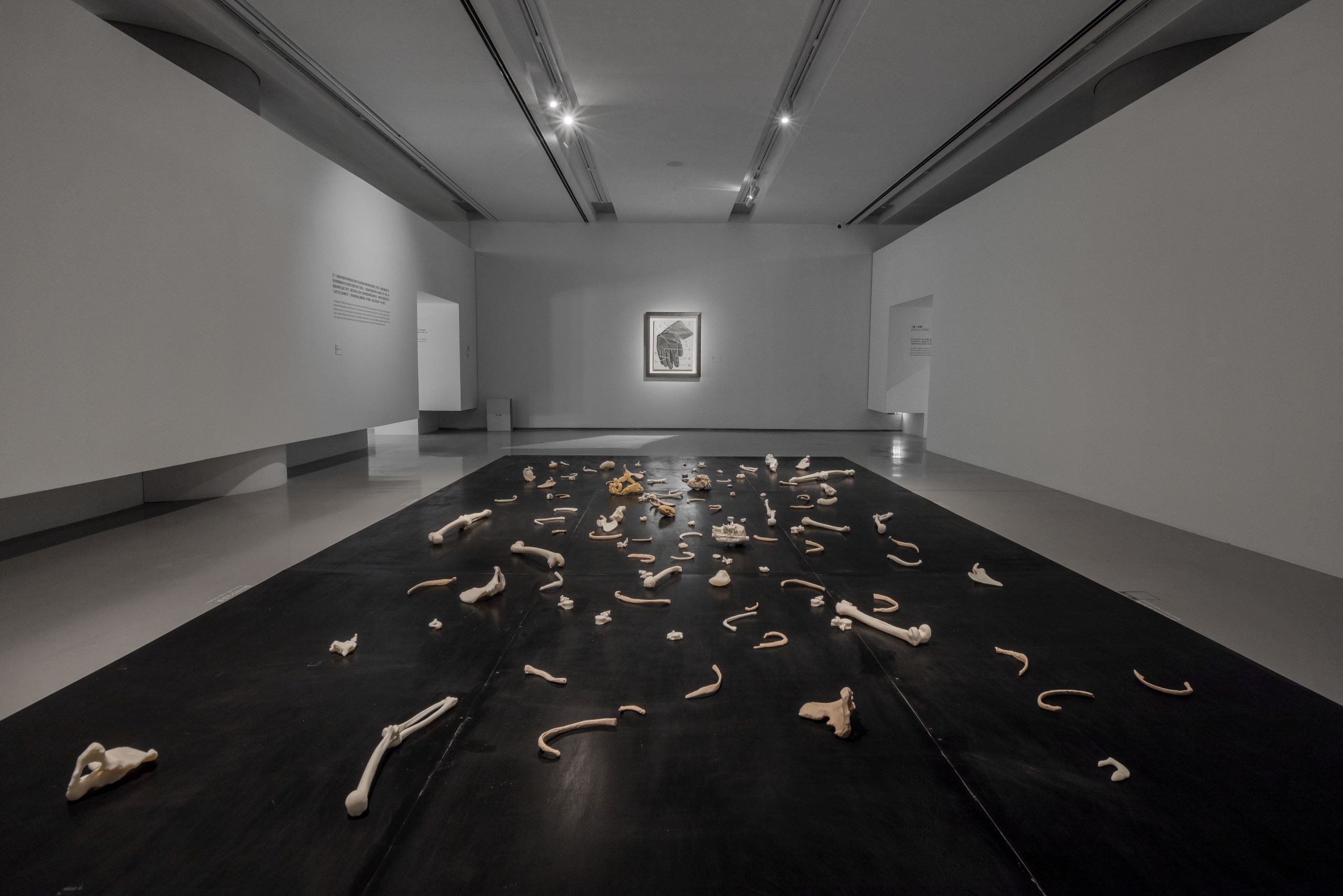
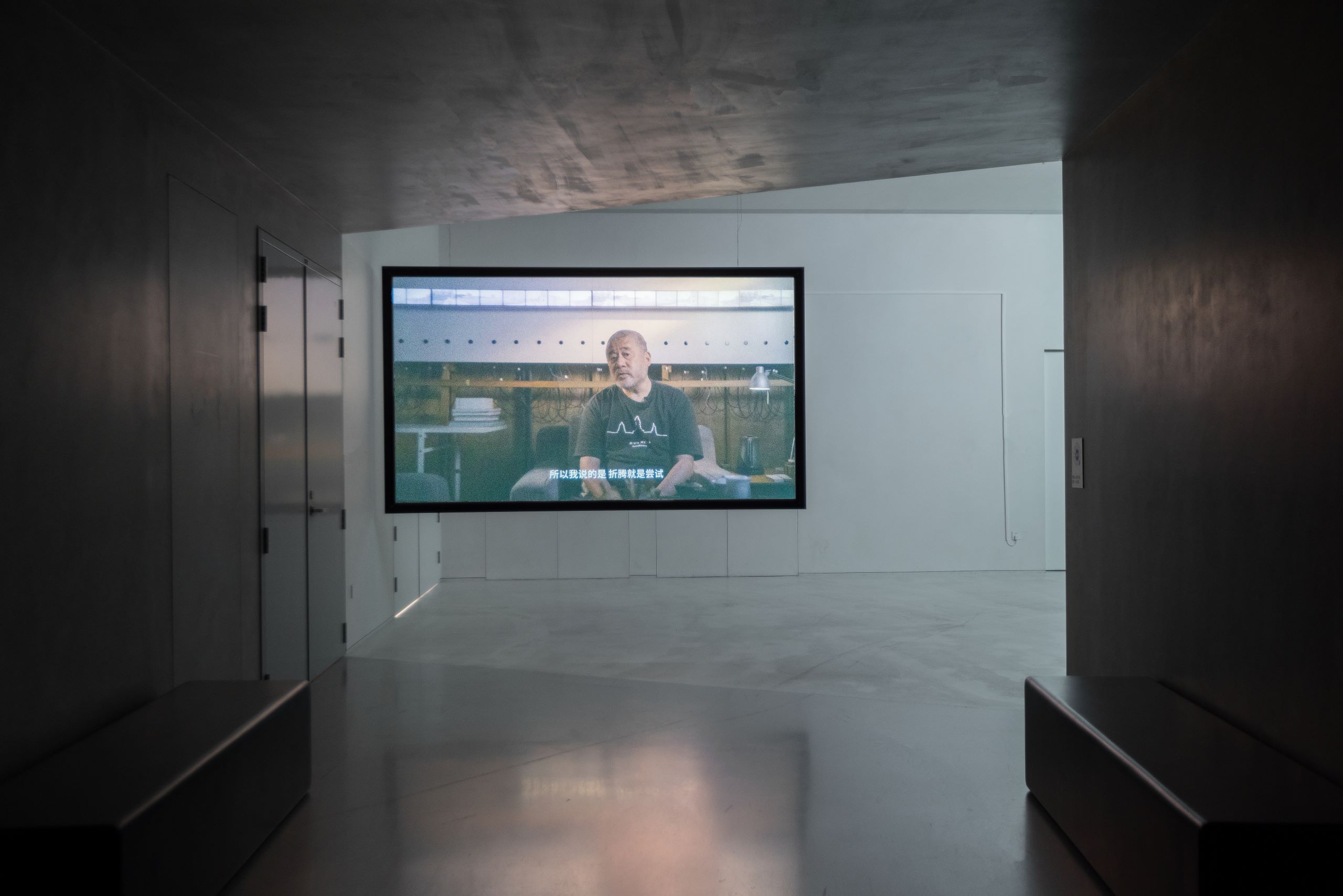
字3号》-1991单频录像-24分钟45秒-scaled.jpg)
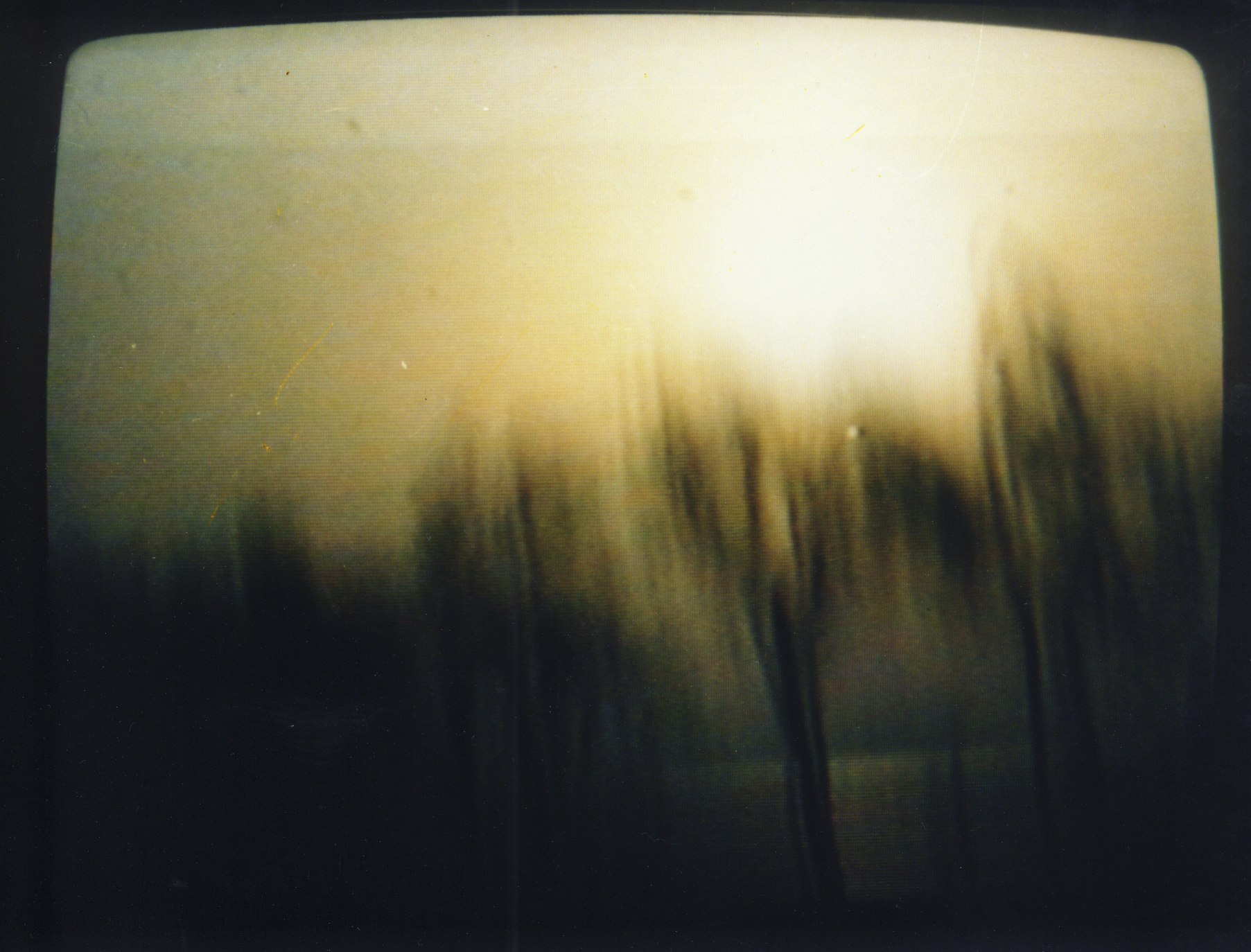
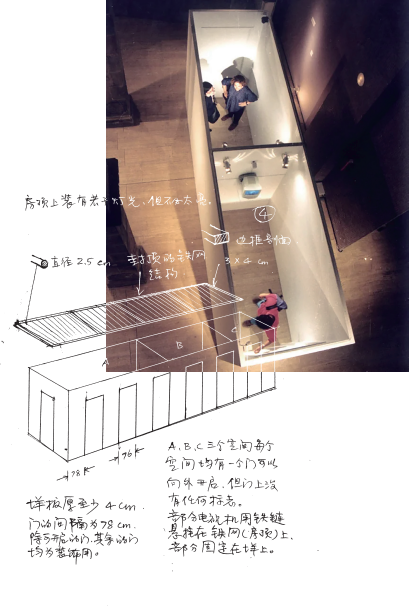

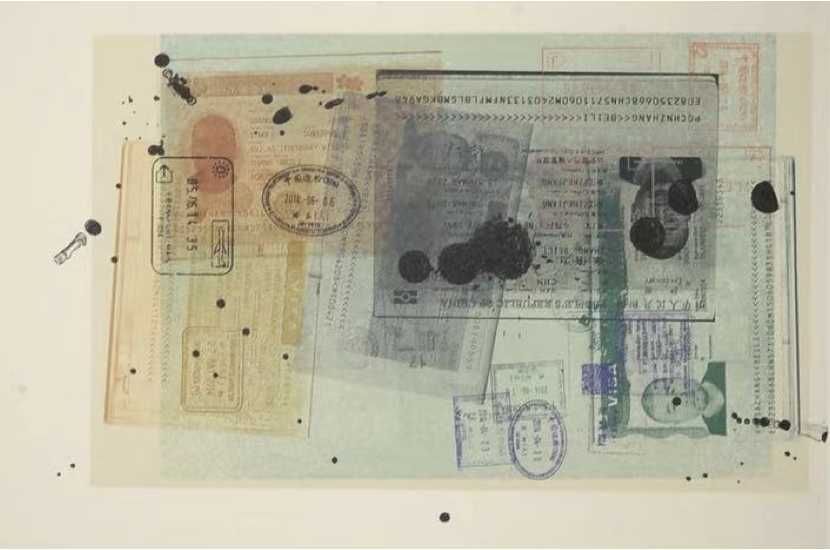
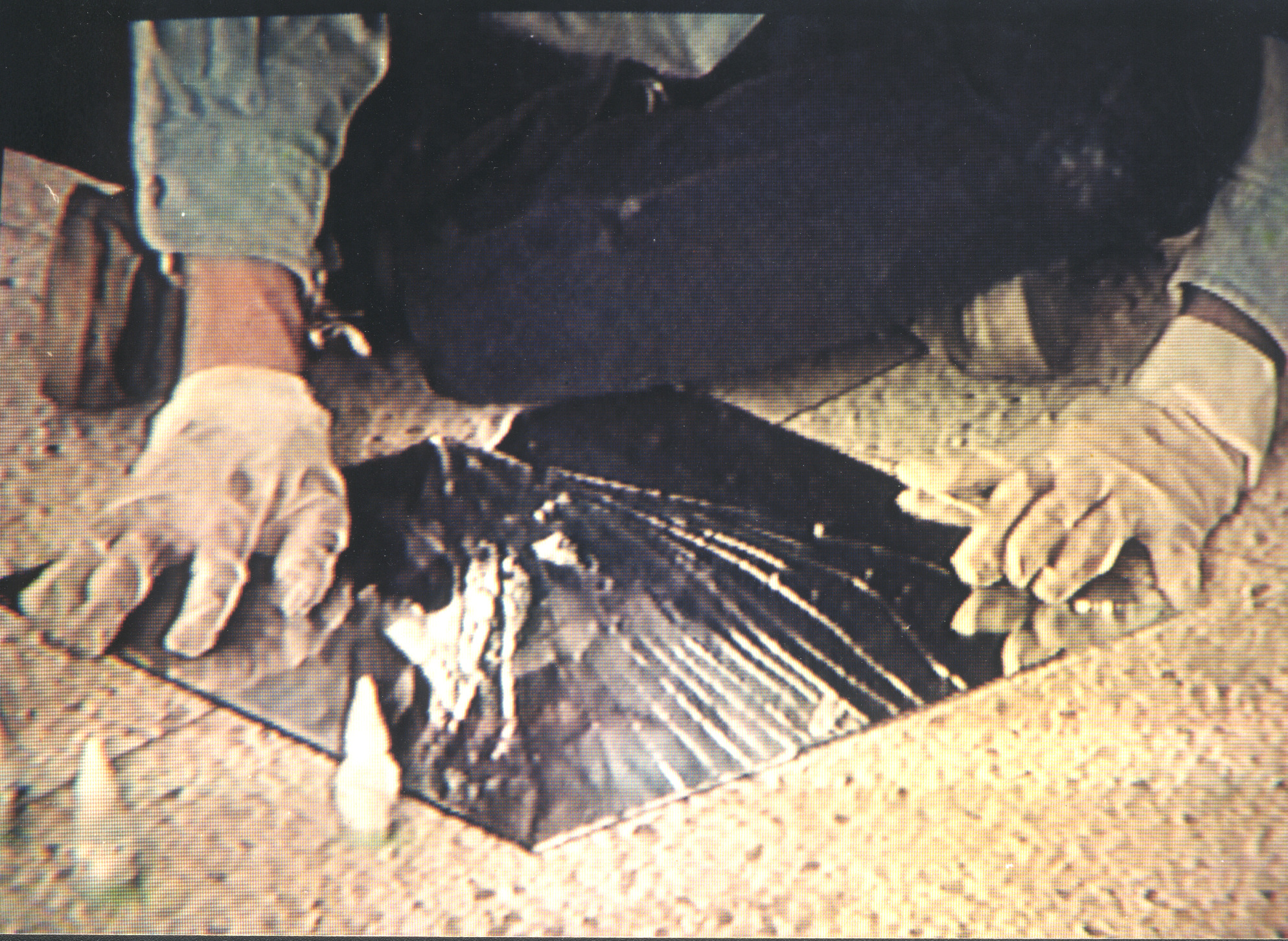
©泰康收藏-TAIKANG-COLLECTION.png)
